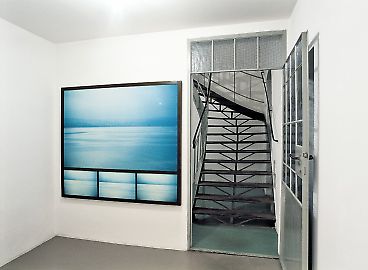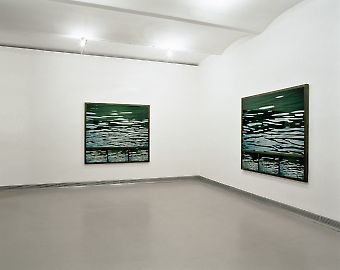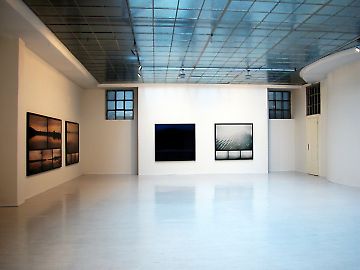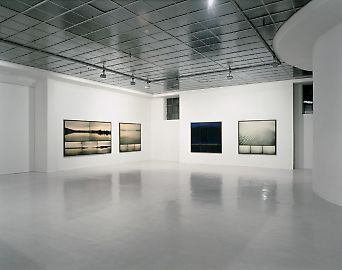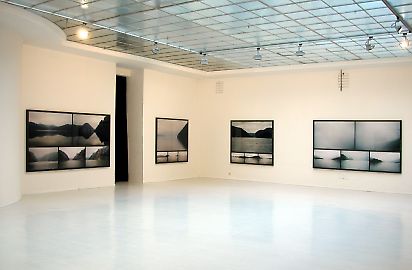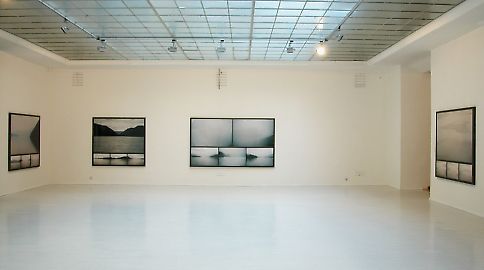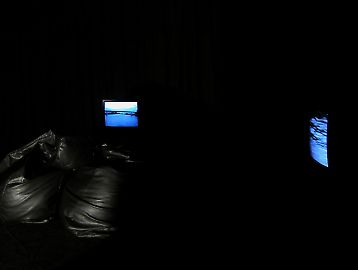Inés Lombardi -- an approximation
Waterway Instead of Data-Highway
From the beginning, the visual representation of movement has been one of the major themes of modernism. Especially the metaphors that Futurism and other directions developed for it have been extremely successful in becoming established, in a certain sense, throughout the entire culture. A conglomeration of idealized technique, abstract form and represented direction has become a code of the time. This code is even capable of easily depicting things that are actually unimaginable, such as traveling at the speed of light or electronically transporting immeasurable amounts of data. Yet especially when we call to mind the meanwhile dull, incessantly recurring representation of the Internet as a "data highway", its camera pans that are so fast, but still almost immobile in comparison with the reality, and the way they abruptly change directions, then we realize that something that was originally developed from the spirit of an edifying avant-garde has now degenerated into an empty and illusionist symbolism.
The new works by Inés Lombardi also deal with movement, and they reopen, so to speak, a fundamental discussion on this theme. They were created during a longer journey between the mouth of the Rhine and the Danube Delta along the waterways that signified the grand utopias of a European economic area only a few decades ago, but which are now more perceived as something of the past, an obsolete idea of what makes up economy and industry. Inés Lombardi made video films that show, in almost hesitant slowness, not only what goes on on the river, but also, and always at the same time, the flowing that goes on as something without a beginning or end. Gradual changes, barely perceptible differences do not permit dropping anchor, so to speak, when viewing the images, or even casting a gaze at the images from outside at all. The journey is simultaneously a journey through Europe with all its real and imagined borders, from the rich north to the borders of the excluded "Balkan", passing obstacles like the bridges destroyed by NATO bombs. The world that is visually captured is not a documentary journey through cultures; the works convey impressions of permanently in-between spaces and a flowing that never ends. The circumstances can only be read very indirectly, for instance in the density of shipping traffic. The installation is arranged in different stations on four monitors displaying images that in turn appear almost static, like a view of the water or of night.
The photographic works in multipart frames do not have the effect of film stills in their arrangement, but rather represent longer, inherently coherent moments. The meticulousness and the slowness, with which the artist works, result in tensions of nearness, distance or perspective. At the same time, though, some passages, such as the breadth of the river or the solitude, evoke a feeling of being lost, which makes the movement seem even more tenacious and unreal. It is exactly this reduced approach that makes it possible to grasp the continuous movement in its complexity, making it clear that it does not necessarily automatically imply a destination, and that it allows for much more than a gaze ahead and a look back.
Although Inés Lombardi uses the technical media very purposefully and not just to construct structures resembling panel pictures, she does not employ them simply to probe their possibilities, but rather attempts to make them explicit through limitation. The images do not purport to transport realities on their surface; it is only in their arrangement and in the permanent and yet barely perceptible change that they allow us an inkling of where the realities could lie. Somewhere between their (over) flow and their reduced emptiness.
Martin Prinzhorn


